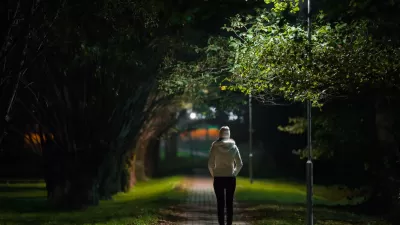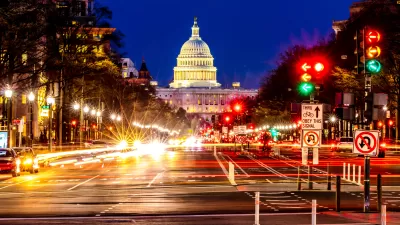In the wake of massive power outages in the Northeast, lighting designer Linnaea Tillett describes pre-industrial techniques for lighting and wayfinding that just might be worth revisiting.
Unacustomed to utter darkness, blackouts leave most of us stumbling around as we search for flashlights and candles. Linnaea Tillett describes navigating the city post-hurricane as a disorienting experience, unsure what street was which; dodging manholes, bikes, walls. Tillet laments an even greater loss, that is what she calls the "glow", or the social experience of light when people on the street see and are seen by one another. Making the case for laterns Tillet points out, "a flashlight lets me see you, but you can’t see me. It works as a policing strategy, but we need lanterns to create a social environment. Lanterns’ soft balls of light...capture faces and illuminate the carriers in groups of two or three or fifty at a time. They create the spaces for us to see each other when we really need to. And a social environment — one that “glows” and enchants —is the best antidote to fear."
Tillet takes us on a journey to the dark ages to learn a few lessons about lighting beyong lanterns alone. "Our ancestors used white chalk and paint to mark the sides of pathways. They painted stones by the edge of the water to denote the danger line. Whitewashed tree bases acted as sign posts; piles of chalk caught the moonlight," she writes, urging us to harness the experiential power of being without power. Tillet concludes, "Small lessons from the time machine that create ease of movement in the dark may just illuminate our thinking of a new urban system that uses less light without sacrificing utility or delight."
FULL STORY: Scared, Bothered, and Bewildered

Alabama: Trump Terminates Settlements for Black Communities Harmed By Raw Sewage
Trump deemed the landmark civil rights agreement “illegal DEI and environmental justice policy.”

Study: Maui’s Plan to Convert Vacation Rentals to Long-Term Housing Could Cause Nearly $1 Billion Economic Loss
The plan would reduce visitor accommodation by 25% resulting in 1,900 jobs lost.

Planetizen Federal Action Tracker
A weekly monitor of how Trump’s orders and actions are impacting planners and planning in America.

Wind Energy on the Rise Despite Federal Policy Reversal
The Trump administration is revoking federal support for renewable energy, but demand for new projects continues unabated.

Passengers Flock to Caltrain After Electrification
The new electric trains are running faster and more reliably, leading to strong ridership growth on the Bay Area rail system.

Texas Churches Rally Behind ‘Yes in God’s Back Yard’ Legislation
Religious leaders want the state to reduce zoning regulations to streamline leasing church-owned land to housing developers.
Urban Design for Planners 1: Software Tools
This six-course series explores essential urban design concepts using open source software and equips planners with the tools they need to participate fully in the urban design process.
Planning for Universal Design
Learn the tools for implementing Universal Design in planning regulations.
Caltrans
Smith Gee Studio
Institute for Housing and Urban Development Studies (IHS)
City of Grandview
Harvard GSD Executive Education
Toledo-Lucas County Plan Commissions
Salt Lake City
NYU Wagner Graduate School of Public Service




























